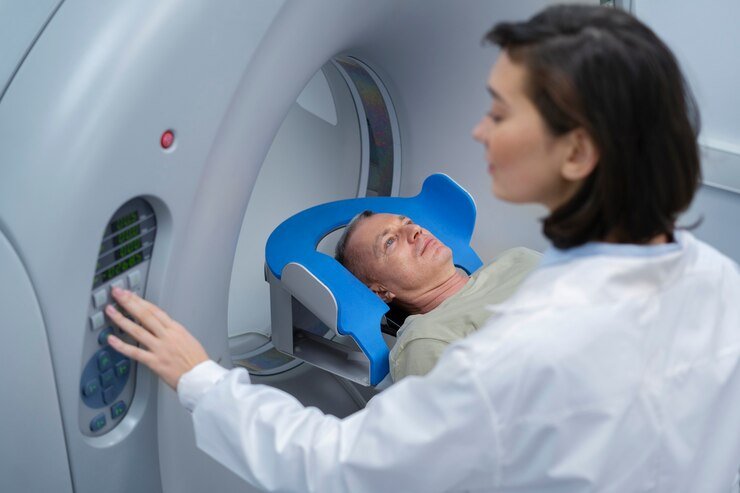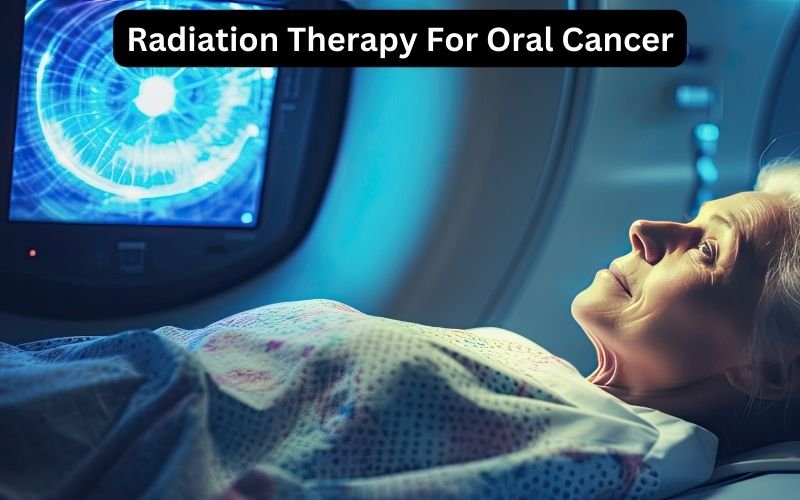Radiation therapy is one of the most common treatments for cancer. Radiation therapy depends on the application of high-energy rays or particles that can target and kill cancerous cells. Used alone or in combination with other treatments like surgery or chemotherapy, radiation therapy has served as a powerful tool that has helped millions of patients worldwide. Understanding how it works and the different kinds of radiation therapy can also be an important step in making informed decisions about what the best treatment would be.
Also Read:- The Role of Radiation Therapy in Mucositis Development
Why Is Radiation Therapy Used?
Radiation therapy is primarily used for cancer treatment. The therapy may be aimed at treating cancer, shrinking tumours, or providing relief from cancer symptoms. Among the primary reasons why it is used include the following:
- To Eradicate Cancer: Radiation therapy is used to completely kill cancer cells, in many cases leading to remission. This is particularly common in cancers that haven’t spread widely from their original site.
- To Shrink Tumors before Surgery: In some cases, radiation therapy is offered before surgery to shrink a tumour. This makes it easier to have it surgically removed with less danger involved.
- To Prevent the Recurrence of Cancer: After surgery, radiation therapy can be used to kill any remaining cancer cells, stopping them from multiplying and spreading again.
- To alleviate symptoms: Radiation can decrease cancer symptoms such as pain, bleeding, or difficulty swallowing in a patient whose disease has progressed beyond treatment. This is referred to as palliative care.
The effectiveness of radiation therapy is determined by the type of cancer, its place of origin, and its extent. It is sometimes used in conjunction with other treatments, including chemotherapy and surgery.
Types of Radiation Therapy
There are two types of primary radiation therapy: External Beam Radiation Therapy and Internal Radiation Therapy or Brachytherapy.
1. External Beam Radiation Therapy (EBRT):
It is the most commonly administered radiation therapy. In EBRT, a machine outside of the body directs high-energy beams to target the cancer. The machine will rotate around the patient and direct beams of radiation from several angles which helps target the tumor while sparing surrounding healthy tissue as much as possible.
Proton Therapy: In contrast to X-rays, this type of EBRT makes use of protons’ energy. Because protons have a well-defined depth of penetration, they are effective in locations where tissue can be spared as far as possible and sensitive structures are protected to the greatest extent possible, such as in brain cancers.
2. Internal Radiation Therapy (BRACHYTHERAPY):
In this form of radiation therapy, the source of radiation is placed inside the patient. For example, small radioactive seeds or capsules may be implanted near or within the tumour. Brachytherapy is utilized to treat a variety of cancers, such as prostate, breast, and cervical cancer.
Systemic Radiation Therapy: This is another form of internal radiation treatment. In this therapy, a patient swallows or is injected with a radioactive substance that travels throughout the body and then targets cancer cells wherever they are. For example, radioactive iodine therapy treats thyroid cancer.
How Does Radiation Therapy Work?
Radiation therapy works by damaging the DNA of cancer cells. DNA is the instruction manual that tells cells how to grow and divide. If radiation damages the DNA in a cancer cell, the cell will be unable to divide and soon will die. Then, the body’s natural process removes the dead cells.
Cancer cells are more vulnerable to radiation than normal cells because they divide more quickly. While radiation treatment has an effect on normal cells, there may be certain side effects. Modern radiation therapy is highly targeted, trying to limit damage to healthy tissues while concentrating radiation on the cancerous area.
Risks and Benefits
While radiation therapy has many benefits, it also has potential downsides. It’s important to weigh these carefully with your healthcare provider.
Benefits:
- Radiation therapy, particularly EBRT, is non-invasive, which means it does not require surgery. This reduces the danger compared to many other surgical treatments.
- Radiation therapy can be combined with other therapies, like as chemotherapy or surgery, to increase the likelihood of success.
- In situations of advanced cancer, radiation therapy can help reduce symptoms and enhance the quality of life by decreasing tumours that cause pain or suffering.
Risks:
- The short-term risks associated with radiation therapy include fatigue, irritation of the skin, and changes in the treated area. These tend to fade away with the termination of treatment.
- In some cases, this can cause long-term damage to healthy tissues. Damage to the chest may cause heart or lung problems later in life.
- Radiation can, at times, result in the development of a new cancer. There is an extremely small chance that cancer will develop later in life as an effect of this treatment. However, the benefits of treating the main area usually far outweigh this risk.
Conclusion
Radiation therapy is one of the most effective and powerful treatments for most cancers. It can also reduce the size of tumours, and help alleviate symptoms in patients with advanced cancer. But like any medical treatment, there can be risks and potential side effects. Understanding how radiation therapy works, patients can best participate in the discussion of pros and cons with their healthcare team to make the very best decision for themselves in their cancer treatment journey.
This radiation therapy brings hope to patients. It has been a lifesaver for many patients. Technological advancement can make it even more precise and with fewer side effects, and this is improving outcomes.



